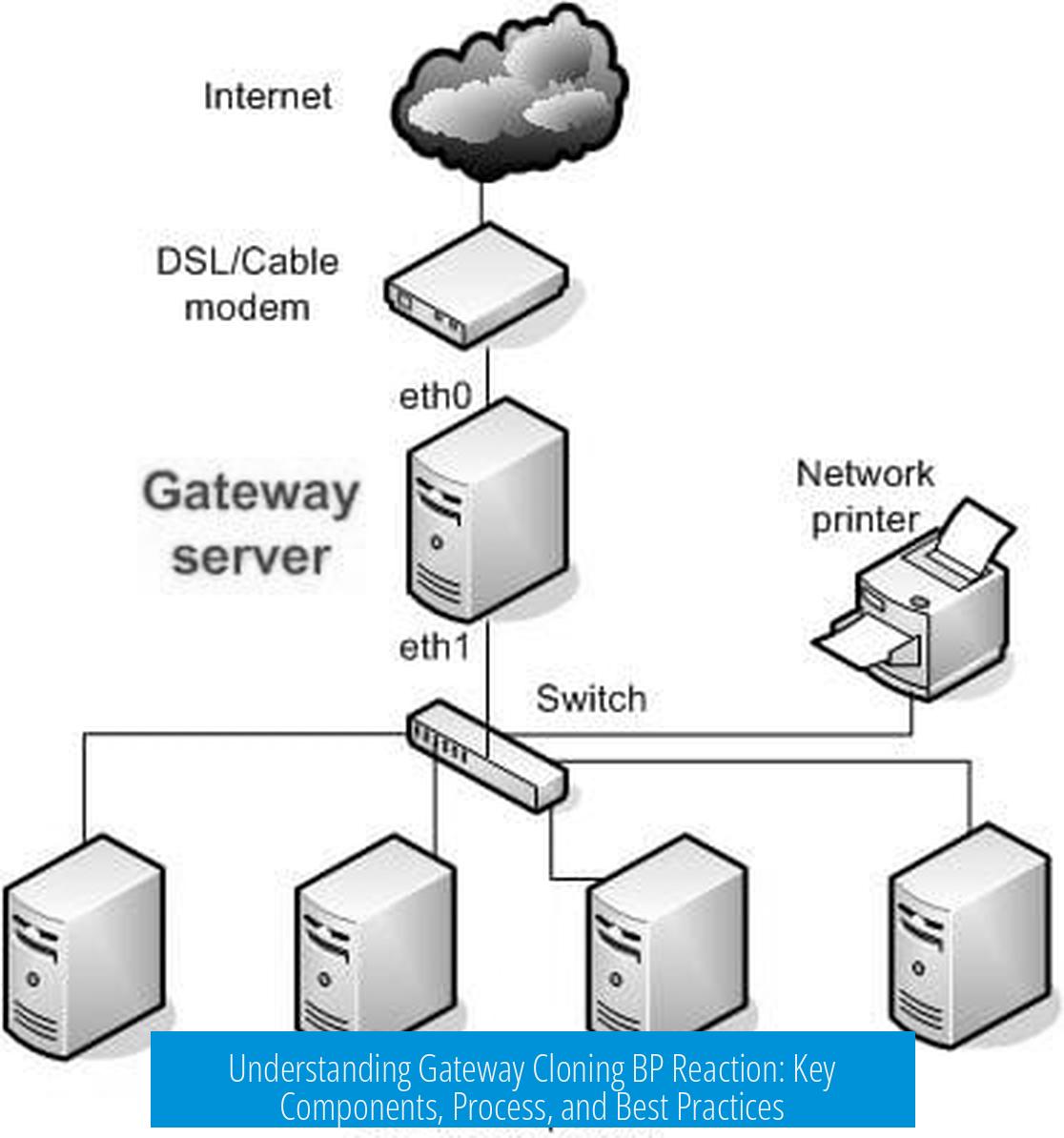Gateway Cloning BP Reaction Explained

The Gateway Cloning BP reaction is a recombination event that inserts a DNA fragment into a donor vector using BP Clonase enzymes. This reaction enables efficient transfer of DNA sequences between different vectors, simplifying cloning workflows.
Key Components and Process
- BP Clonase enzyme catalyzes recombination between attB sites on the DNA fragment and attP sites on the donor vector.
- The reaction produces an entry clone with attL sites flanking the inserted DNA, ready for subsequent LR reactions.
Enzyme Activity and Storage Considerations
BP Clonase enzymes lose activity over prolonged storage, even at -20°C. Best results come from storing aliquots at -80°C.
Keeping only the current working tube at -20°C while freezing others at -80°C helps maintain enzyme integrity and reaction efficiency.
Incubation Time Optimization
The standard incubation time is usually 1 hour at room temperature. However, extended incubation can improve results.
Incubating the reaction for up to 2 days at room temperature still yields successful recombination, which can be useful if immediate processing is not possible.
Troubleshooting Gateway BP Reaction

- If no colonies appear on the positive control plate, suspect multiple factors including reaction failure or poor competent cells.
- Confirm the competence of the bacterial cells used for transformation. Inefficient or old competent cells reduce colony formation drastically.
- Verify correct vector and insert sequences and purity to avoid cloning failures.
Summary of Best Practices
- Store BP Clonase enzymes at -80°C; minimize freeze-thaw cycles.
- Consider longer incubation times, even up to 2 days at room temperature.
- Use fresh, highly competent cells for transformation to improve colony recovery.
- Always include positive controls to validate the reaction’s success.
Gateway Cloning BP Reaction: Unlocking the Secrets of Seamless DNA Cloning
Ever felt stuck staring at a tube labeled “BP Clonase” wondering if it’s really working or just chilling in there playing dead? You’re not alone. The Gateway Cloning BP reaction is a nifty molecular biology tool designed to shuttle DNA fragments into entry vectors with high efficiency, using recombination instead of restriction enzymes. But, like any good recipe, timing, ingredients, and storage conditions matter. Let’s dive deep and uncover the hidden quirks, best practices, and troubleshooting tips around the BP reaction that can save your experiments and sanity.
The Foundation: What Is Gateway Cloning BP Reaction?
Gateway Cloning simplifies DNA cloning by using site-specific recombination from bacteriophage lambda. The BP reaction connects a DNA fragment flanked by attB sites with a donor vector containing attP sites. The product? An entry clone with attL sites suitable for further recombination steps. It’s faster and more precise than traditional cloning methods and cuts down the noisy restrictions of enzyme digestion and ligation.
Enzymatic Lifespan: The BP Clonase Activity Puzzle
Picture this: you carefully stash away your precious BP Clonase enzyme at -20°C thinking it’s safe. But after weeks, your reactions flounder. What gives? Though -20°C is the recommended freezer temperature, the reality is that BP Clonase loses activity over prolonged storage even under these conditions. The enzymes are likely sensitive to freeze-thaw cycles or slow degradation.
Here’s a golden nugget from lab lore: store BP Clonase aliquots at -80°C and keep only the current working tube at -20°C. This method drastically reduces enzyme degradation and preserves activity for your next breakthrough experiment.
Incubation Time: How Patience Pays Off
Have you been rushing your incubation, sticking to standard 1-hour protocols? You might want to reconsider. One curious scientist accidentally discovered you can leave the BP reaction incubating at room temperature for a whopping two days—and it still works.Extended incubation at RT can boost recombination efficiency, offering more time for enzymes to do their magic.
Of course, this isn’t a license to forget your reaction tubes on the bench forever. But if time allows, a prolonged incubation might turn a tricky cloning into smooth sailing without the usual fuss.
Troubleshooting Gateway Cloning BP Reaction: When Things Go South
Nothing is more frustrating than no colonies after plating your BP reaction. Before you curse the reagents or the cosmic cloning gods, consider these common pitfalls:
- Positive Control Check: If your positive control doesn’t yield colonies, your reaction setup might be flawed overall.
- Competent Cells Competence: Are your bacteria truly ready to gobble up foreign DNA? Inefficient competent cells are a silent killer of cloning success.
It’s key to remember these issues are not directly caused by the BP reaction but severely affect your ability to verify its success. Perform control transformations with known positive plasmids regularly to confirm cell competence. Always have fresh, well-prepared competent cells to maximize your cloning returns.
Putting It All Together: Practical Tips to Master Your BP Reaction
- Aliquot your BP Clonase enzyme and thaw only what you need. This prevents repeated freeze-thaw cycles that sap enzyme potency.
- Consider prolonged incubation at RT—up to two days—to give your reaction extra time to complete. This tip can save experiments that otherwise underperform in short incubations.
- Always include positive controls and verify competent cell performance. These two checks quickly pinpoint whether the problem is with the reaction or downstream processes.
- Store working enzyme tubes at -20°C and long-term stock at -80°C. This is more than just a good practice; it’s an investment in consistent cloning success.
- Keep reaction clean and follow protocol volumes carefully. A little slip-up can turn your precious DNA into cloning duds.
Final Thoughts—The Gateway to Cloning Success
The Gateway Cloning BP reaction can be as tricky as it is brilliant. Understanding that small details like enzyme storage temperature or incubation timing can majorly affect outcomes will empower you to troubleshoot effectively and improve your cloning workflow. It’s a bit like baking bread; the right yeast (enzyme) freshness and proofing time (incubation) make the difference between a loaf and a brick.
Next time your Gateway BP reaction trips you up, ask yourself: Did I store the enzyme right? Did I give the reaction enough time? Are my competent cells up to snuff? Addressing these questions improves results and minimizes frustration.
So, keep your BP Clonase chilled but not ignored at -80°C, consider leaving reactions to mingle a little longer at room temperature, and don’t forget the humble competent cell test. With these tips, your DNA shuttling adventures are about to become a lot smoother.
“If cloning were easy, it wouldn’t be rewarding.”
Ready to put your Gateway Cloning BP reactions on the fast track to success? Now, you have the inside scoop.
What is the best storage condition for BP Clonase to maintain its activity?
BP Clonase tends to lose activity if stored long-term at -20°C. Storing it at -80°C helps preserve its function better.
Can the incubation time for the BP reaction be extended beyond standard protocols?
Yes, it is possible to incubate the BP reaction for longer times. It has been shown to work even after 2 days at room temperature.
What should I check if my Gateway cloning BP reaction shows no colonies, even in positive controls?
Check the competence of your cells first. If positive controls fail, both the reaction and cells may be problematic.





Leave a Comment